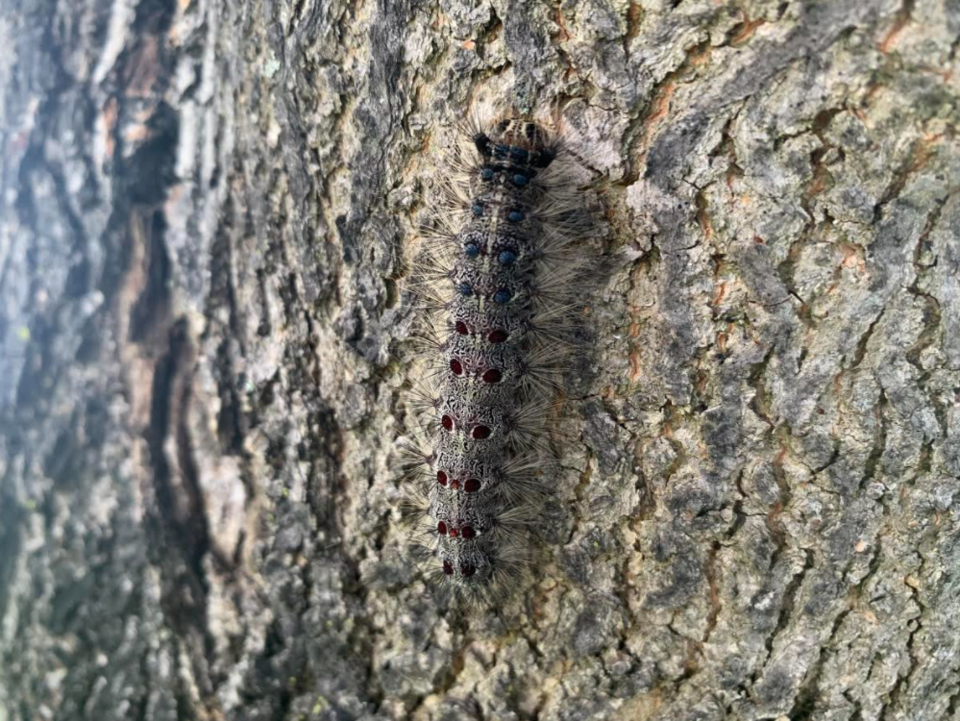Conservation authorities expect a “patchy” level of spongy moth infestation in the GTA this year but are “optimistic” that the invasive species is declining locally.
Five conservation authorities, including Newmarket’s Lake Simcoe Region Conservation Authority, presented about the tree-damaging insects April 20. The bugs, also known as Lymantria dispar dispar, have plagued York Region and southern Ontario for the past couple of years, defoliating and potentially killing vulnerable trees.
But Toronto Region Conservation Authority senior manager Karen McDonald said it is difficult to predict the population, but the infestation is likely to decline from last year in the GTA.
“Some areas are likely to be hit harder than others,” McDonald said. “We are cautiously optimistic that natural controls present in the environment are resulting in an LDD population contraction in our area.”
Newmarket and York Region have worked to combat the moths with public education efforts, providing free burlap to help deal with caterpillars, and tips on egg mass tracking and scraping.
But the moths were severe in 2021, defoliating 1.78 million hectares of forest, according to the conservation authorities.
The insect’s population is cyclical, with outbreaks approximately every six to 10 years. A virus tends to come forth to keep the population in check, and Conservation Halton forestry technician Jennifer Roberts said predators and a fungus also help control the naturalized population.
“Effectiveness of the virus is dependent on high caterpillar density. So if there are not enough caterpillars to sustain the virus, then the virus dies off, so it’s a real catch-22,” she said. “These natural controls are part of why the population declines after a few years.”
However, some areas outside the GTA, including Guelph, Alymer, Parry Sound and Bancroft are likely to experience moderate to severe levels of infestation this year based on surveying, the authorities said.
The presentation highlighted efforts to address the infestation, including education. LSRCA forestry program coordinator Cory Byron said they have also piloted spreading caterpillars infected with the virus to populations that do not have it yet.
Participants asked questions about the best way to deal with the insects and were advised about measures like tying burlap to trees and killing caterpillars in soapy water in the spring or egg mass scraping in the fall.
But although the caterpillars can damage trees and make them harder to enjoy, the authorities are not going to manually crush the population. McDonald said we can rely on natural controls to deal with them in time.
“Yes, it’s alarming, and it’s really unfortunate to have this LDD infestation. But it is temporary,” she said. “It’s just a temporary nuisance. It’s going to go away eventually, and we can all go back to enjoying our forests and green spaces.”



